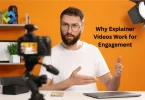Businesses that consistently produce high-quality video content don’t just perform better—they dominate. They rank higher in search results, engage audiences more deeply, and convert leads at rates that static content simply can’t match. But here’s the reality: producing that level of content requires time, skill, and systems. This article will walk you through actionable frameworks for leveraging video as your primary growth engine while using strategic Virtual Assistant support to scale your efforts without burning out. You’ll learn how to structure workflows, delegate effectively, and build a hybrid team that keeps your brand moving forward.
Table of Contents
Table of Contents
How a Virtual Assistant Elevates Your Video Marketing Workflow
Content Planning and Research
A skilled Virtual Assistant transforms your content planning process. They conduct topic research, analyze keyword opportunities, track competitor strategies, and monitor emerging trends. This intelligence keeps your content relevant and positions you ahead of market shifts rather than reacting to them.
Instead of spending hours researching what to create next, you receive organized recommendations based on data. Your VA identifies content gaps in your library, suggests trending topics within your niche, and maps ideas to different stages of your customer journey.
Pre-Production Support
Before you ever hit record, considerable planning work ensures smooth production. VAs excel at creating script outlines that structure your talking points, developing shot lists that guide filming, scheduling shoots around your availability, and managing creative assets like stock footage, music libraries, and graphics templates.
This pre-production support means you arrive prepared for efficient filming sessions. No more winging it on camera or wondering what to cover. Your VA has organized everything needed for successful content creation.
Post-Production and Publishing Support
After filming comes the laborious work of getting content published across platforms. Virtual Assistants handle uploading videos to YouTube, Facebook, Instagram, TikTok, and LinkedIn. They optimize each upload with platform-specific titles, descriptions, and tags that improve discoverability. They repurpose long-form content into multiple short clips, maximizing value from each filming session.
Using tools like video caption services, your VA can ensure accessibility and engagement by adding accurate captions that help viewers watch without sound—critical for social media consumption. A virtual assistant mexico or from any skilled market can collaborate seamlessly with your editors and marketers to streamline production workflows, managing file organization, version control, and platform-specific formatting requirements.
Analytics and Performance Reporting
Understanding what works requires tracking engagement metrics across platforms. VAs compile monthly performance summaries showing which videos attracted views, held attention, and drove conversions. They identify patterns in high-performing content and suggest improvements based on data rather than guesswork.
This insights loop transforms your content strategy from reactive to proactive. You stop creating in the dark and start building on proven success patterns.
The Modern Digital Landscape and Why Video Dominates

The Shift Toward Visual-First Communication
We’ve entered an era where visual communication isn’t just preferred—it’s expected. Short-form videos on TikTok, Instagram Reels, and YouTube Shorts have exploded in popularity, while long-form content continues thriving on platforms like YouTube and LinkedIn. Data consistently shows that video content generates higher engagement, longer watch times, and better retention than text or static images. Audiences process visual information faster, remember it longer, and trust it more deeply.
This shift reflects how human brains are wired. We’re visual creatures who respond to movement, emotion, and storytelling. Video delivers all three simultaneously, making it the most efficient medium for capturing attention in a crowded digital space.
Why Brands Must Prioritize Video Content Creation
Video engages multiple senses at once, creating a richer experience that keeps viewers watching. It performs exceptionally well across social platforms because algorithms reward content that holds attention and drives interaction. When someone watches your video for 30 seconds versus scrolling past a static post in three, the platform notices and amplifies your reach.
Beyond algorithmic advantages, video builds brand authority and personal connection in ways other formats can’t replicate. Seeing a founder explain their mission, watching a product demonstration, or following a behind-the-scenes tour creates emotional bonds that written content struggles to match. Your audience doesn’t just learn about your brand—they feel connected to it.
Core Benefits of Using Strategic Video Content in Your Marketing Plan
Boosting Visibility and Discoverability
Search engines and social platforms prioritize engaging video content in their ranking systems. Google frequently displays video results at the top of search pages, while platforms like Instagram and LinkedIn give preferential treatment to native video uploads. Consistency matters enormously here—brands that publish regular video content train algorithms to recognize them as active, valuable creators worth promoting.
This compounding effect means each video you publish increases your overall discoverability. New viewers find your latest content, then explore your back catalog. Your library becomes an asset that continues attracting audiences long after publication.
Accelerating Conversions and Lead Quality
Video excels at moving prospects through the buyer journey. Product demonstrations show exactly how solutions work. Customer testimonials provide social proof that builds trust. Explainer videos answer objections before prospects even voice them. The combination of visual demonstration and educational value shortens decision-making timelines.
The most effective videos balance education with subtle calls-to-action. Rather than hard selling, they provide genuine value while naturally guiding viewers toward next steps. This approach respects audience intelligence and builds goodwill that translates into higher-quality leads.
Increasing Audience Trust
Video humanizes your brand in ways that written content simply cannot. When audiences see faces, hear voices, and observe genuine reactions, they connect with the people behind the business. This transparency builds trust that converts casual viewers into loyal customers.
Behind-the-scenes content, Q&A sessions, and founder stories create authenticity that modern audiences crave. They want to know who they’re buying from and what values those businesses represent. Brands that publish consistent video content build stronger relationships and achieve higher retention rates because they’ve invested in genuine connection, not just transactional marketing.
Why You Should Hire Support for Your Video Marketing

Time, Skills, and Strategy Management
Most businesses underestimate the workload involved in producing quality video content. It’s not just filming—it’s researching topics, scripting narratives, managing lighting and sound, editing footage, optimizing for different platforms, writing compelling descriptions, designing thumbnails, scheduling uploads, and analyzing performance metrics. Each step requires specific skills and considerable time.
The reality hits hard when founders realize they’re spending 15 hours weekly on content production instead of growing their business. Quality suffers when you’re rushing through edits at midnight. Consistency breaks down when client work takes priority. Strategic thinking disappears when you’re buried in tactical execution.
When to Hire Extra Support
You need help when scaling content frequency becomes your growth bottleneck. If you’re limiting video production because you can’t keep up with current volume, you’re leaving opportunity on the table. When repetitive tasks like uploading, tagging, and scheduling consume hours weekly, that’s delegation-ready work. When maintaining quality becomes difficult because you’re stretched too thin, it’s time to build support infrastructure.
The breaking point arrives differently for everyone, but the signal is clear: when content production prevents you from doing higher-value strategic work, you need help. When you hire specialized support, you free up time for strategy and creativity—the work that actually grows your business.
Smart Ways to Combine Your VA With Video Marketing Tools
Automations Your Virtual Assistant Can Manage
The right tools multiply your VA’s effectiveness exponentially. They can manage scheduling platforms like Buffer and Hootsuite, ensuring your content publishes at optimal times without manual intervention. AI editing assistance tools speed up rough cuts and basic edits. Video captions and transcription services make your content accessible while improving SEO performance.
Your VA becomes the orchestrator of these tools, ensuring they work together seamlessly rather than creating disconnected workflows.
Systems That Make Delegation Smooth
Effective delegation requires clear systems. Standard Operating Procedures (SOPs) for content review ensure quality standards remain consistent. Template libraries speed up repetitive design work. Brand guideline documentation keeps voice, tone, and visual identity aligned across all content.
These systems prevent miscommunication and reduce revision cycles. Your VA knows exactly what success looks like because you’ve documented expectations clearly.
Tools for Collaborative Work
Project management platforms like Notion, Trello, and Asana keep everyone aligned on priorities and deadlines. Google Workspace provides centralized file organization with appropriate access controls. Communication tools like Slack or Loom enable quick questions and feedback without cluttering email.
The right collaboration stack transforms working with remote team members from challenging to seamless.
Types of Video Content a Virtual Assistant Can Help You Produce

Educational Videos
Tutorials, explainers, and breakdowns establish your authority while providing genuine value. Your VA researches topics, outlines content structure, and manages the production pipeline that turns ideas into published videos. Educational content builds trust and positions your brand as the go-to resource in your space.
Brand-Building Videos
Founder stories, team culture spotlights, and mission-focused content humanize your business. These videos might not drive immediate conversions, but they build the emotional connection that turns customers into advocates. Your VA schedules these strategic pieces among your conversion-focused content.
Lead-Generating Videos
Webinar snippets, FAQ responses, and advantage-focused clips move prospects toward purchase decisions. These videos address specific objections, demonstrate value propositions, and provide social proof. Your VA optimizes these for maximum visibility and tracks which messages resonate strongest.
Sales and Retention Videos
Product walkthroughs guide new customers through successful onboarding. Client case studies provide proof for prospects. Update announcements keep existing customers engaged. Your VA ensures these videos reach the right audiences at the right times in the customer lifecycle.
Hiring the Right Virtual Assistant for Your Workflow
Skills to Look For
The ideal VA for video marketing brings specific capabilities: content research skills that identify trending topics, social media management experience across multiple platforms, light editing abilities that handle basic cuts and adjustments, and familiarity with analytics tools that track performance metrics.
Look for candidates who understand how different platforms work and what content performs best on each. Platform expertise prevents costly mistakes like posting vertical videos to YouTube or horizontal content to Instagram Stories.
Interview Questions to Assess Fit
Ask candidates about their experience managing content calendars across multiple platforms. Discuss how they’d adapt content for different brand voices. Present scenarios about handling multi-platform posting rules and optimization strategies. Their answers reveal whether they understand the strategic thinking behind tactical execution.
Onboarding Process
Successful onboarding establishes clear communication cadence, defines role expectations explicitly, and sets realistic timelines with measurable performance KPIs. Invest time upfront teaching your brand voice, content standards, and workflow preferences. This foundation prevents miscommunication and accelerates your VA’s path to independent contribution.
Conclusion
The path to commanding online presence isn’t mysterious—it’s systematic. Smart video marketing combined with strategic Virtual Assistant support transforms how businesses build visibility, engage audiences, and drive growth. Video’s dominance in modern digital communication isn’t temporary; it’s fundamental to how people consume information and make decisions.
Leveraging video strategically while delegating intelligently allows you to maintain consistency without sacrificing quality or burning out. You don’t need to be everywhere doing everything. You need the right systems, the right support, and the right priorities. Start by auditing where your time goes now, identify what only you can do, and delegate everything else to capable team members who multiply your effectiveness.














